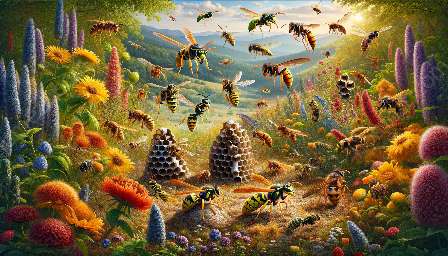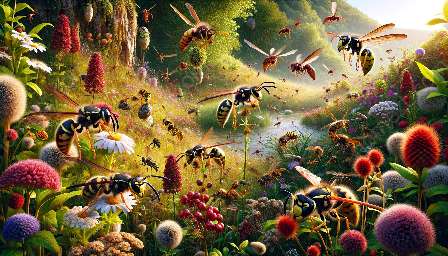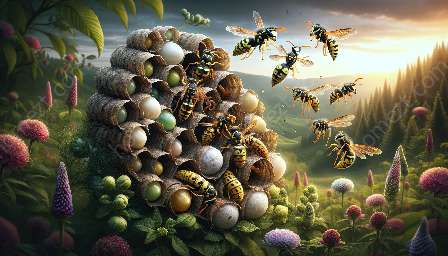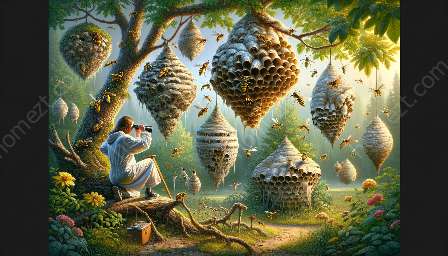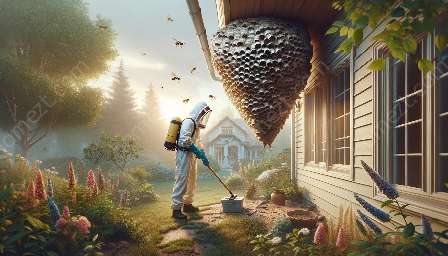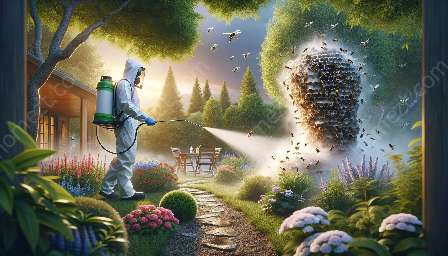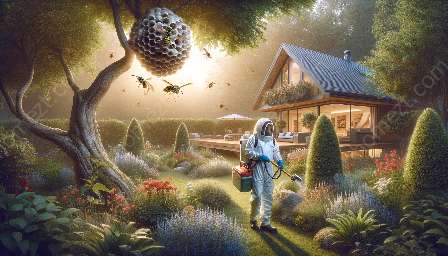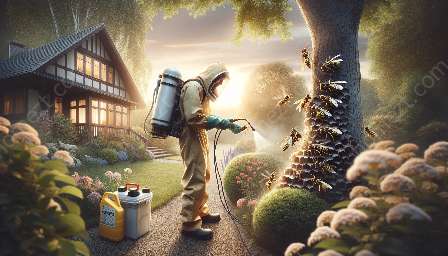Dealing with wasp infestations can be a daunting task for homeowners. These stinging insects can pose a threat to people and pets, especially those with allergies. Understanding how to effectively manage and control wasp populations is essential for maintaining a safe and pest-free environment.
The Importance of Addressing Wasp Infestations
Wasp infestations can have serious implications for the safety and well-being of individuals and the surrounding environment. These pests are known for their aggressive behavior when their nests are disturbed, making them a significant hazard, particularly during the warmer months.
Moreover, a large wasp infestation can negatively impact outdoor activities, such as gardening, barbecuing, and enjoying outdoor spaces. It is essential to address these infestations to ensure a safe and comfortable living environment for everyone.
Understanding Wasps
Before implementing control methods, it's crucial to understand the behavior and life cycle of wasps. Wasps are social insects that build nests from paper-like material. Their colonies can grow rapidly, with some species capable of housing thousands of individuals. Additionally, the presence of a wasp nest can lead to territorial behavior, making it essential to approach their control with care and caution.
Types of Wasps
There are several common types of wasps that homeowners may encounter, including paper wasps, yellowjackets, and hornets. Each species has unique characteristics and nesting habits, requiring specific approaches for effective management.
DIY Methods for Wasp Control
While professional pest control services offer effective solutions, there are some DIY methods that homeowners can use to address minor infestations. It's important to approach these methods with caution and utilize appropriate safety measures to avoid stings and potential risks.
- Inspecting and Identifying Nests: Conduct a thorough inspection of the property to identify existing wasp nests and determine their locations. Stay alert and cautious while doing so, especially if nests are hidden or difficult to access.
- Using Wasp Traps: Placing commercial or homemade wasp traps in strategic locations can help reduce wasp populations. These traps can be baited with sweet substances to attract and capture wasps.
- Sealing Entry Points: Prevent future infestations by sealing potential entry points and cracks in the property's structure. This can help limit the access of wasps to indoor and outdoor spaces.
- Applying Natural Repellents: Some natural repellents, such as essential oils or vinegar-based solutions, can deter wasps from building nests in certain areas. However, their effectiveness may vary, and caution should be exercised when using these products.
The Role of Professional Pest Control
For more severe and persistent infestations, enlisting the help of professional pest control services is highly recommended. Experienced technicians can assess the situation, develop tailored strategies, and implement effective treatments with minimal risk to residents and the environment.
Professional pest control services offer the following advantages:
- Expertise: Trained professionals have in-depth knowledge of wasp behavior and biology and can determine the most appropriate course of action.
- Safe and Effective Treatments: Pest control companies use specialized products and techniques to safely eradicate wasp nests and prevent future infestations.
- Preventive Measures: In addition to addressing existing infestations, professional services can implement preventive measures to minimize the likelihood of future wasp problems.
- Safety Precautions: Professionals prioritize safety when dealing with wasp infestations, minimizing risks for residents and pets.
Safety Precautions When Dealing with Wasps
Whether utilizing DIY methods or professional services, it's crucial to follow safety precautions to minimize the risk of stings and adverse reactions.
- Protective Clothing: Wear appropriate clothing, such as long sleeves and pants, along with gloves and a veil if dealing with active nests.
- Alerting Others: Inform family members, neighbors, and visitors about the presence of wasp nests and the steps being taken to address the infestation.
- Seeking Professional Help: If unsure about handling a wasp infestation, seek assistance from professional pest control services to ensure safe and effective management.
Conclusion
Dealing with wasp infestations requires a combination of knowledge, caution, and appropriate measures. By understanding the behaviors of these insects and employing effective control methods, homeowners can maintain a safe and pest-free environment. Whether opting for DIY approaches or professional assistance, addressing wasp infestations is crucial for safeguarding the well-being of residents and promoting a harmonious living space.

